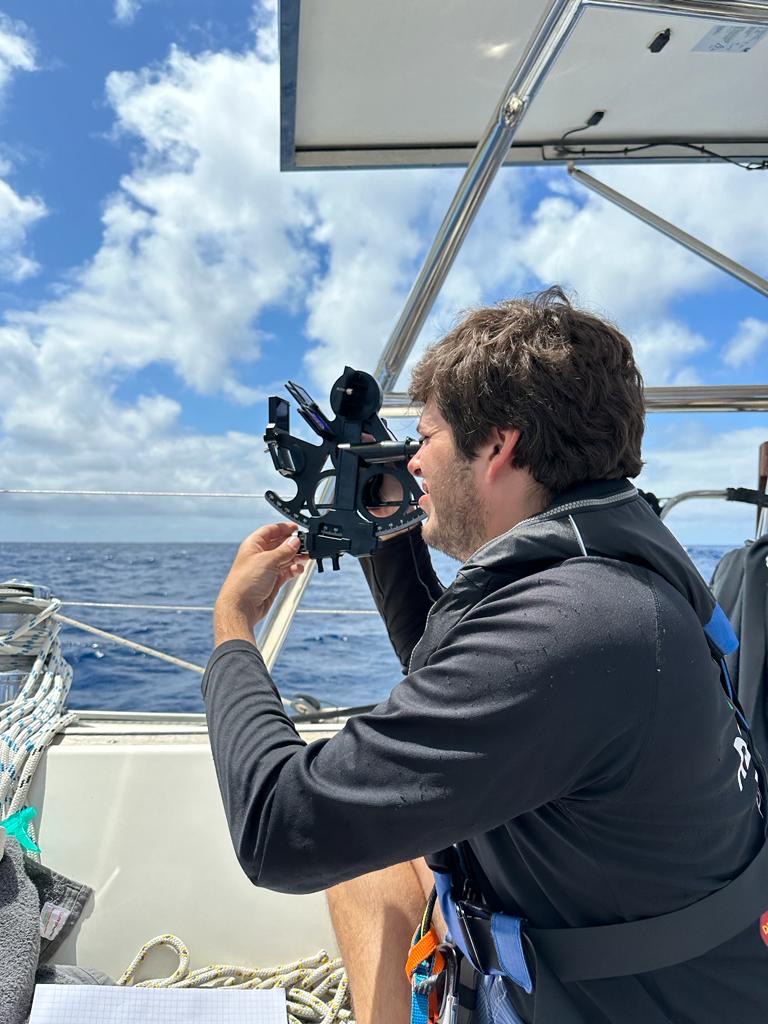The Sextant: What is it and how to use it?
Wavy talks through the basics of navigating at sea with a sextant.


The Importance of Navigating with a Sextant
Let's start with a small introduction into why we need to learn and understand how to navigate with a sextant. All vessels at sea need to have two forms of navigation on board. So, if the course is a coastal one, GNSS (Global Navigation Satellite System) counts as one and a hand held compass and paper charts would count as another. For example, a GNSS fix can be corroborated with a three point fix.
Advantages of navigating with a sextant
Once we are offshore we need to be able to get a fix other than the GNSS system. If for instance your power drops or dies for some reason, your GNSS receiver will not work and an alternative way to get a fix is needed. This is where the sextant, a good time piece and the skill and knowledge to use them comes in. Apart from this being a legal requirement, this is obviously for the safety of the vessel and crew and safe navigation.

How do you use a sextant for navigation?
Now we understand why we need the skill, let's focus on the how. One cannot just pick up a sextant and expect to get a fix. There is a lot of additional training/educating on how it works as well as the additional books/plotting sheets/stationary you need to carry in order to convert a sextant reading into a fix. Therefore it is highly recommended that one attends a class either in person or online before attempting sextant use. And then when doing your first fixes, you do it with a person who can assist you in the process. It is also recommended that you keep doing fixes as practice as it is a skill that if not used regularly can fade quite easily.
Reading a Sextant
In very basic terms a sextant reading is the angle between the earth's horizon and a heavenly body (Sun Moon, Planets and Stars). This is then converted into a fix using multiple mathematical calculations and geometric plots. Leaving the maths aside, using the sextant itself is a skill that is developed over time. And the higher the skill level, the more accurate the fix. This is combined with the time on either side of the meridian line (where East and West meet at zero degrees, not the international date line where they meet at 180 degrees.) You also need to set a sextant up before venturing out, as it is a delicate instrument, which is based on precision. It needs to be handled with care and respect. Again a skill that is taught in classes.
The sextant itself is a collection of mirrors that reflect the heavenly body and can then be "brought down" to the horizon to give you the required angle for your calculations. This in conjunction with accurate time can give you your Latitude and Longitude. It is therefore recommended that while actually "shooting" a heavenly body one uses a scribe ready to read the time, at the exact moment that your body hits the horizon and can record the information for you. I generally use the word "mark" as soon as my readings are correct.
How can you avoid incorrect readings?
Firstly, you need a nice clear day or evening, so you have a good horizon, not too dark or misty, and can clearly see the heavenly body you are shooting. A poor horizon due to darkness or mist leads to inaccurate readings. In the same vain a cloudy sky means a poor reflection and again inaccurate readings. An incorrect time piece will also lead to inaccurate readings, as your longitude is derived from time either side of the meridian line. But let's be realistic, if your fix is five miles out and you are using an ocean scale chart it will not matter the distances to area's of navigational danger tend to be in the hundred's of miles and as you approach dangers, they tend to be visible and can be avoided.
Join our Adventures to Aquire Celestial Navigation Skills!
In summary, sextant use is, like all navigation, a skill that is learned and then practiced to improve your navigation.The instrument itself needs to be handled with care and stored where it cannot be bumped or knocked, and your timepiece needs to be checked regularly for accuracy. Not to mention it is a fun and rewarding thing, getting a good reading and you look incredibly cool doing it.
If you want to brush up your Celestial navigation skills, or learn the basics on a real ocean crossing, check out our upcoming trips from to St Helena Island - The whole trip is 48 days, including five amazing days exploring the island itself. If you're limited on time, you can join just the outbound leg (Cape Town to St Helena) or the inbound leg (St Helena to Cape Town) with excellent flights too and from the Island now possible.
The best leg for Celestial Navigation is the inbound, Helena to Cape Town leg - We go deep into the South Atlantic which is the perfect place to learn the skills required of navigation by the sun and stars.
